The Mies van der Rohe Pavilion is an iconic work of modern architecture, designed by Ludwig Mies van der Rohe and Lilly Reich for the 1929 Barcelona International Exposition.
It may not make you look up: its size and its location at the foot of the mountain and next to other large pavilions of the 1929 Barcelona International Exposition mean that for many it goes unnoticed. But, for those who know of its existence, a visit to the Mies van der Rohe Pavilion is a must. And for those who have visited it, it is unforgettable..

The Mies van der Rohe Pavilion: an extraordinary experience
To be in the Mies van der Rohe Pavilion is to enjoy a unique space where the exquisite selection of materials by Lilly Reich and Ludwig Mies van der Rohe and their way of integrating the interior space with the exterior creates a unique experience.
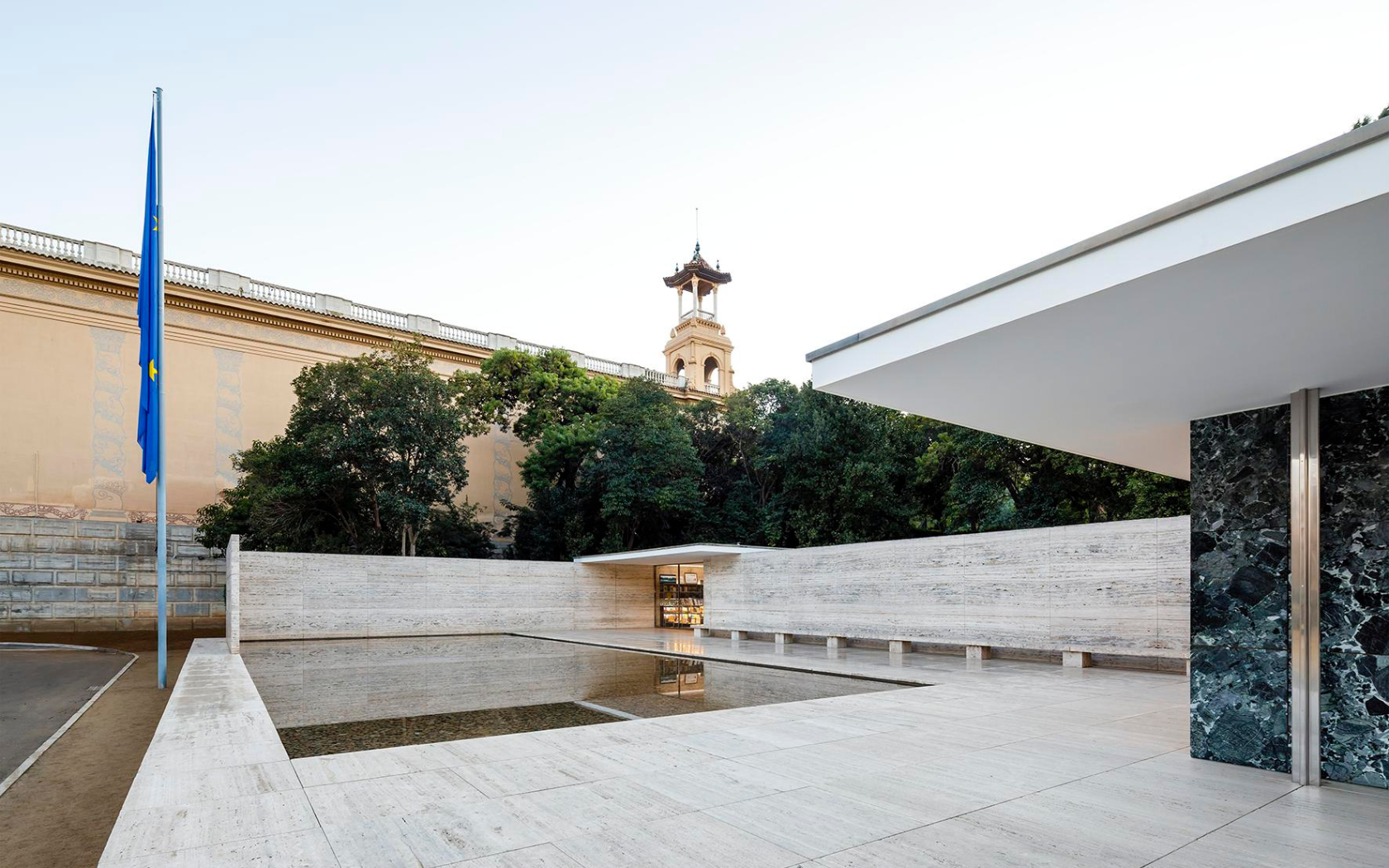
Mies van der Rohe Foundation. Photo: Marcela Grassi
Let yourself be fascinated by the reflections that the light against the water or through the different types of glass projected on the noble materials that hold the eye in the detail and encourage touch. Polished stones that add ochres, greens and golds that incorporate the light and the reflections of the water and the vegetation, inviting us to retain this unique and changing moment and to share it.
An emblem of modern architecture
The Mies van der Rohe Pavilion is a luxury space, which Germany commissioned Ludwig Mies van der Rohe and Lilly Reich to represent at the Barcelona International Exhibition in 1929. It was conceived as a space to be walked through, not to be or contain an exhibition, but to host an experience and dress it with the patina of perfection.
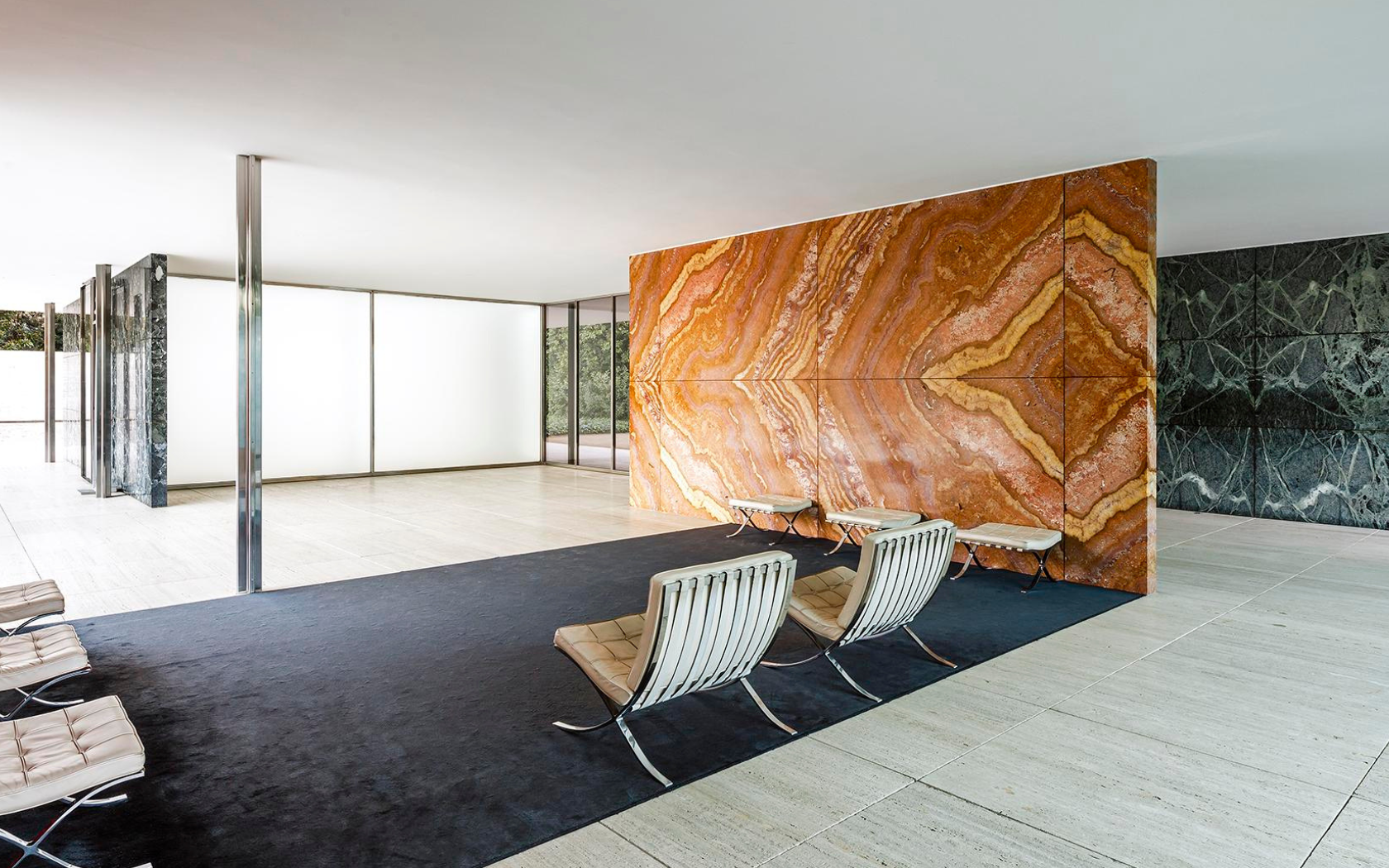
Photo: Marcela Grassi – Fundació Mies van der Rohe
Eight slender cross-shaped columns support the large flat roof, and the load-bearing walls are arranged to create a fluid space. Classic materials – marble, onyx and travertine – coexist with modern elements – stainless steel and large sheets of glass- and two sheets of water that generate an infinite play of reflections and transparencies that masterfully integrate the interior and exterior. A total design on which every detail has been thought out: the two large flagpoles that frame the Pavilion, the vegetation that surrounds it, the Alba sculpture by Georg Kolbe, the iconic Barcelona chairs expressly designed for this space, the black carpet and the red velvet curtain which, together with the golden onyx, are the colours of the German flag.
Badge of the “Less is More” paradigm
Its straight and elegant lines, eliminating everything that is dispensable, pioneering when they were born almost a century ago, defined a new design ideal that has turned the Mies van der Rohe Pavilion into an international benchmark for the architectural values of the architecture of the Modern Movement. The paradigm of the motto “Less is More”.
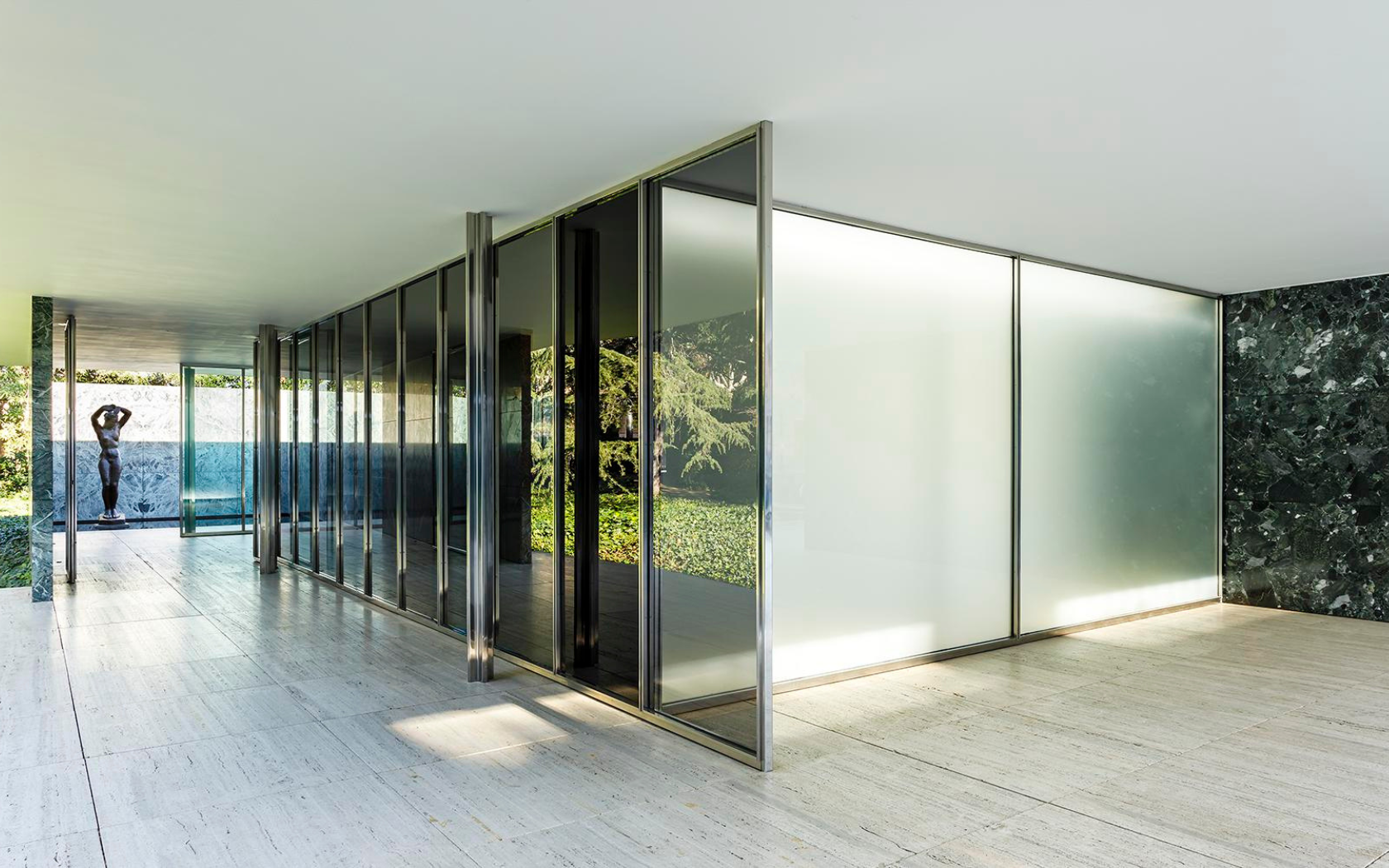
Mies an der Rohe Pavilion. Photo: Marcela Grassi
Its mission accomplished, it was dismantled after a few months, but even in its material absence it remained as a mythical presence, representing an ideal of modernity. Its structural simplicity, geometric rigour and precise use of materials constituted a resounding declaration of principles, a new way of understanding architecture that established the foundations of the modern movement.
Fundació Mies van der Rohe: a boost for culture
In 1986 its reconstruction on its original site was inaugurated with the current name of Mies van der Rohe Pavilion and for this purpose the Mies van der Rohe Foundation was created, whose mission is based on the reconstruction of the Pavilion and is consolidated as a cultural platform open to everyone that promotes debate and research in the field of architecture and urban planning through educational activities, conferences, research projects and artistic interventions that enable the Mies van der Rohe Pavilion to be a space of inspiration and experimentation for the most innovative artistic and architectural creation.
A mission for research and education
The Mies van der Rohe Foundation is in charge of the European Union Prize for Contemporary Architecture – Mies van der Rohe Awards, one of the most prestigious architectural awards in the world, established in 1988, and in the promotion of architectural research and the Lilly Reich Scholarships for Equality in Architecture in its academic and baccalaureate version.
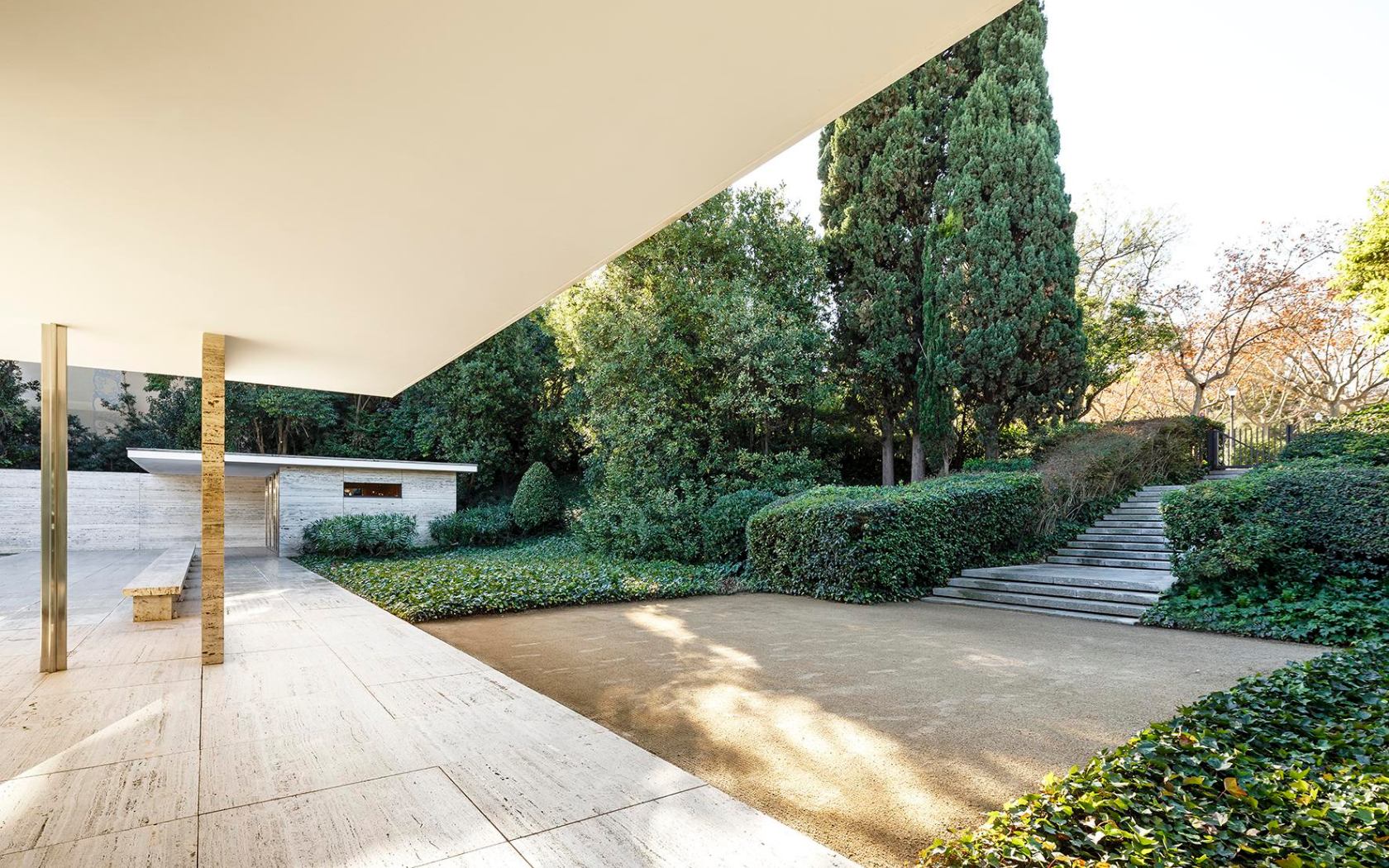
Photo: Marcela Grassi – Fundació Mies van der Rohe
Educational resources, a library, exhibitions and much more…
The Fundació Mies van der Rohe has a library, a collection and an archive open to the public that form the basis of the educational and academic resources offered through its programme of activities, exhibitions, documentaries and its own publications.
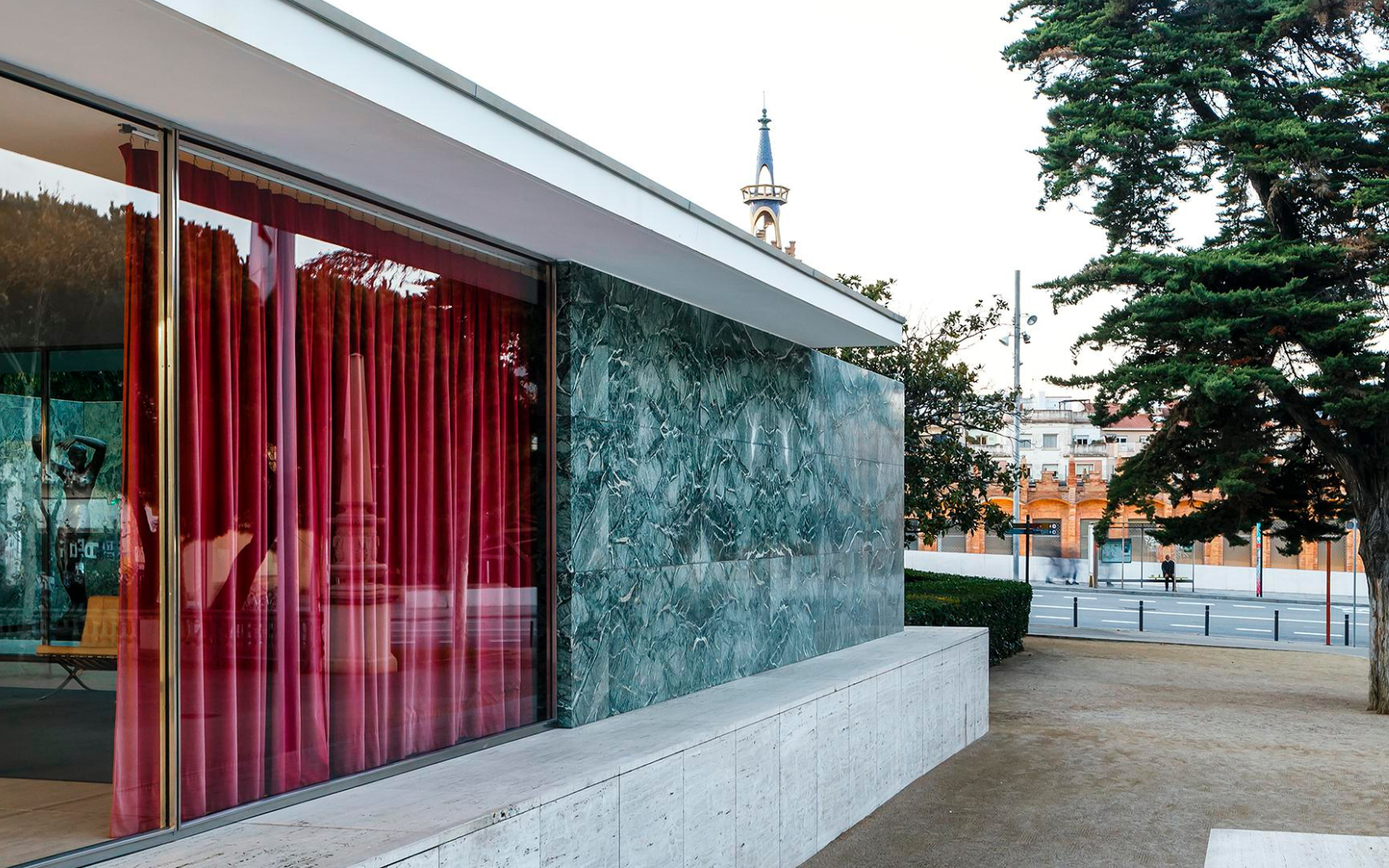
Photo: Marcela Grassi – Fundació Mies van der Rohe
The Pavilion can be visited every day from 10:00 to 20:00 and is available for rent for public and private events and for reporting purposes.
It is located on the esplanade of the fountains of Montjuïc.
Av. Francesc Ferrer i Guàrdia 7, Barcelona.
Facebook: @FundacioMiesvanderRohe
Instagram: fundaciomies
Subscribe to the newsletter to be kept up to date with all activities




